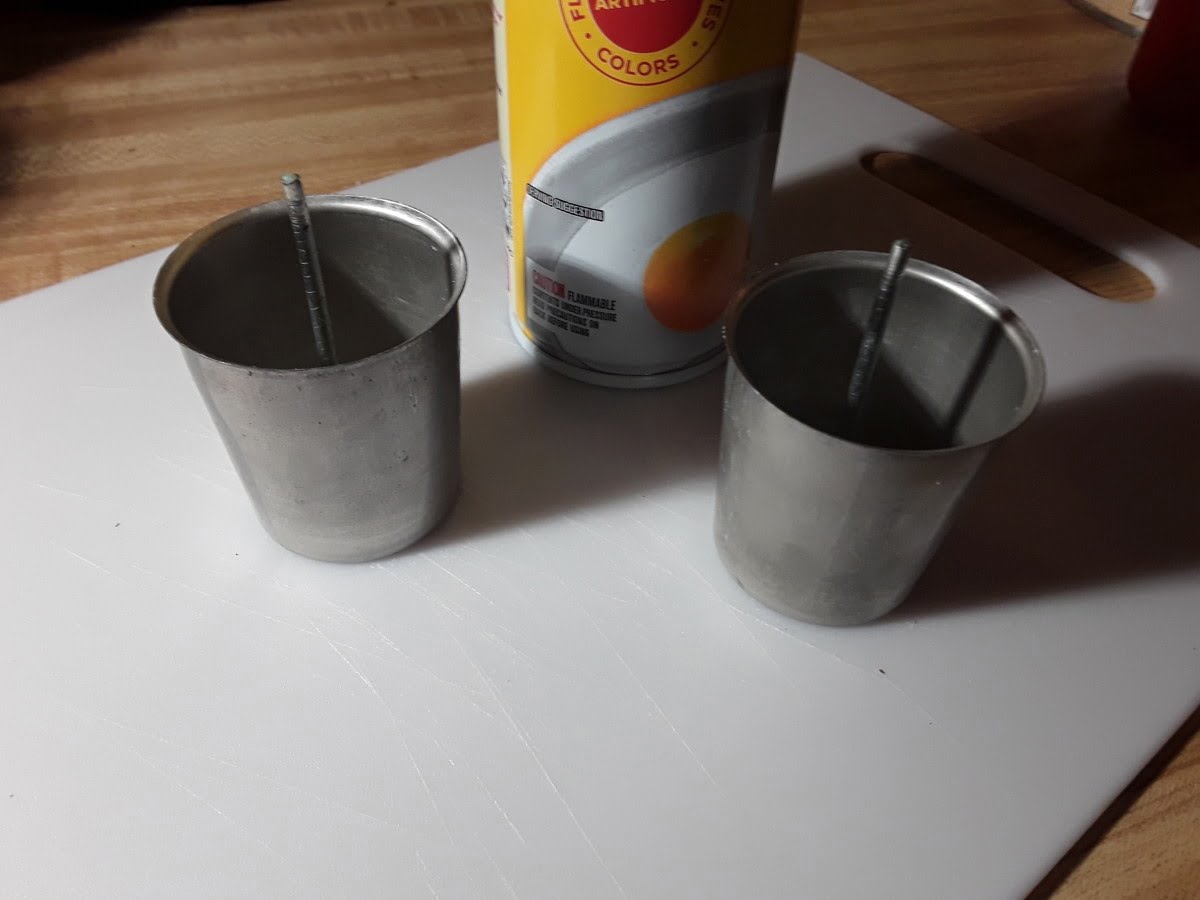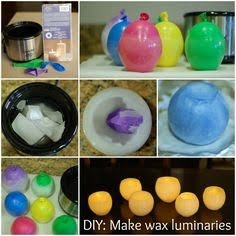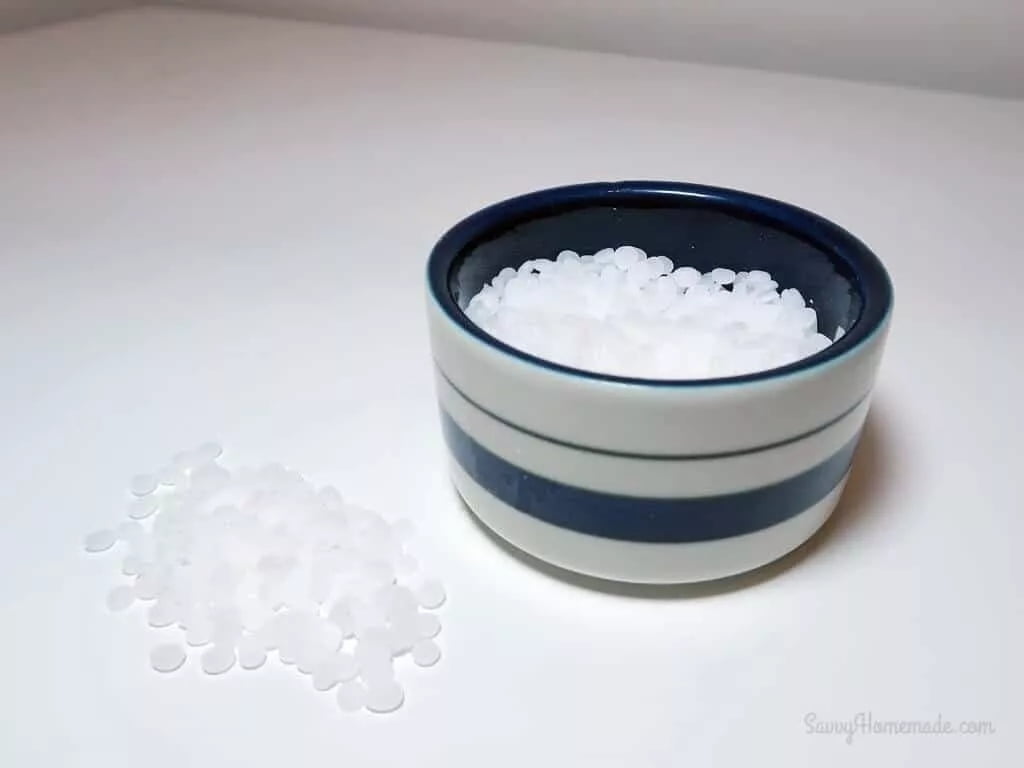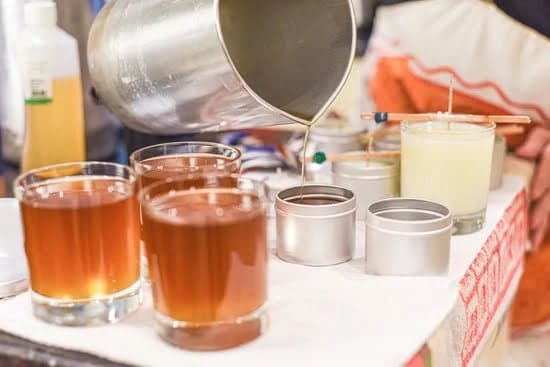Pure essential oil for candle making is a great alternative to synthetic fragrances. Essential oils are naturally occurring chemicals that have powerful, yet subtle aromatic properties when used in candles. These oils contain unique and delicate chemical compounds that can’t be found with synthetics, giving them a richer aroma.
Many essential oils are extracted from plants through a special process known as distillation. This process works by boiling or steaming the plant material in water, capturing the essential oil vapors, then condensing them back into liquid form while leaving behind all of the impurities and waxes found in conventional extracts. Depending on the type of plant being used for extraction, different temperatures and amounts of time may be necessary to produce the desired results.
Because of their natural properties and low environmental impact, pure essential oils can make for excellent candidates for creating all-natural candles with pleasant fragrances. The use of these oils versus synthetic alternatives has become increasingly popular thanks to growing awareness about their health benefits as well as an increased demand for eco-friendly products in general.
By infusing these high-quality scents into soy or other renewable wax types, you can create beautiful organic candles that will fill your home with lasting aromas without contributing any hazardous air pollutants or fillers.
In addition to their exquisite aromas, many pure essential oils come directly from aromatic plants that offer lasting therapeutic benefits such as mood boosting capabilities or better sleep support among others so be sure to research which ones might work best for you when selecting your oil choices if this is something that interest you.
These days there’s an array of scents available when it comes to pure essential oil for candle making so no matter what fragrance profile you’re after – from floral scents like Lavender or Rosemary to zesty citruses like Lime or Orange – chances are there’s something perfect out there waiting just for you.
Additionally, working with pure essential items pairs well with other DIY crafting materials such as molds and wick rings since they require minimal preparation prior to use and last longer than regular fragrance oils once blended properly into the wax itself so experimenting can quickly become a very enjoyable experience even for beginners.
All-in-all, using pure essential oil provides easily accessible ways of customizing your own candles while also taking part in more environmentally friendly practices – what could be better?
Benefits of Using Pure Essential Oils in Candle Making
Essential Oils have been around for centuries and offer many health benefits both internally and externally. Used in many medical practices, Pure Essential Oils can be used to help support better overall health including emotional wellbeing, relaxation, and stress relief. In addition, there are some amazing benefits that come from using Pure Essential Oils in Candle Making.
The all-natural fragrances of essential oils have long been used to evoke a mood or feelings of well-being when inhaled. When included in candle wax, they release the powerful properties even more so by combining with the heat and flame of the candle itself. In particular, candles made with essential oils enhance creativity and set a peaceful ambiance throughout your home.
So how exactly does adding Pure Essential Oil to Candles benefit you? Here is a list of some of the key advantages:
- Emotional Wellbeing – The pleasant aromas created by essential oils promote a confident state that enhances psychological balance.
- Relaxation – Certain scented candles create an inviting atmosphere which can help you relax and unwind after a long day.
- Stress Relief – Studies have shown that certain fragrances help reduce feelings of stress and tension.
- Aromatherapy – Aromatherapy is well known for helping improve mental clarity, reduce negative emotions like fear and anxiety, improve focus, energy levels, deep sleep as well as physical pain.
When it comes to making your own candles at home with pure essential oils, you’re able to customize your own signature scent mix according to individual preferences. This opens up endless possibilities for experimenting with complex personal blends that evoke exactly what you want each time furthering benefiting one’s wellbeing.
Moreover, even inhaling these beautiful fragrances after lighting up the candle can trigger considerable results over time by calming your body naturally while getting enough rest for recovery purposes afterwards.
Different Types of Pure Essential Oils Commonly Used in Candle Making
When it comes to using pure essential oils for candle making, there is a wide variety of types available to choose from. Floral essential oils are some of the most popularly used in candle making due to their subtle scent and ability to add a touch of elegance to any room.
The most commonly used floral essential oil that can be found in candles is lavender, which delivers an aromatic and calming effect. Other floral scents often included are rose, jasmine, ylang-ylang and chamomile all designed to bring a bit more beauty into your home.
Woody Essential Oils
Woody essential oils, such as cedarwood and sandalwood, come with an earthier scent reminiscent of nature’s forests. This type of oil gives off a warmer vibe while also appealing to those who prefer a more musky tone. Combining woody essential oils with other aromas such as florals can lead to intriguingly unique smells appropriate for all seasons.
Citrus Essential Oils
Finally for citrus aromas nothing beats the lively vibrancy derived from orange, grapefruit and lemongrass essential oils. A great way to invigorate your living space while adding an uplifting touch of zestiness. Citrus essential oils help promote positive emotions as well as create an atmosphere that helps relieve anxieties and stress levels without overwhelming the senses with strong odorations.
With various options on offer when it comes to selecting pure essentials oils for your candle making journey you don’t have to be limited by only one aroma but instead think up splendid combinations that complement each other nicely regardless whether it be a sweet floral plus woody mix or even something out there like verbena plus eucalyptus – let your imagination be your guide.
To Get Started
When looking for pure essential oils and other supplies to make candles, it’s important that you take the time to find quality products. The quality of your ingredients will directly affect the safety and performance of your candles. Start by sourcing reputable suppliers who offer lab-tested and certified pure essential oils.
Ask questions such as: “What is the extraction process used for this oil?” and “Are the suppliers certified organic?” Always look for all-natural preservatives like vitamin E, jojoba and grape seed oil when purchasing essential oils.
Next, consider buying a high-quality beeswax in bulk as it is a great option for creating eco-friendly candles. You can purchase wax from craft stores or online retailers. Make sure to inspect the purity of the wax before purchasing it as some suppliers may try to pass off low-grade wax as being 100% natural beeswax. Quality beeswax should have a light honey scent and be pliable enough to form into various shapes easily.
Finally, select from a range of wicks available on the market depending on what type of candle you are making, such as jar candles or tea lights. Look for wicks made of flat cotton strings or braided paper covered in cobalt salt that creates long burn times with minimal soot residue left behind when burning your candles.
This ensures your candle lasts longer without reducing its desirable effects from releasing fragrance by way of burning them. Once you have found quality products from reputable suppliers you should ensure that they will keep their promise by getting tested certificates prior to investing in them.
Making the Most of Pure Essential Oils
There are multiple benefits associated with using pure essential oils for candle making. Most notably, aromatherapy candles made with essential oils provide therapeutic benefits such as relaxation, calming emotions and reducing stress. Essential oils are also biodegradable, making them a healthier and more gender-friendly choice than synthetic fragrances.
Whether you’re just starting out in candle making or have been doing it for some time, the proper use of pure essential oils is critical to achieving the desired result. Here are some tips that can help you get the most out of your candles:
- Start by checking the labeling information on your essential oil – certain oils require dilution before using it while others don’t require any dilution at all
- Do not apply too much oil to your candles – if too much is used, the scent can become overwhelming and overpowering
- When measuring out your pure essential oil for each candle batch, always use graduated beakers or measuring cups to ensure accuracy in measurements
- For use in beeswax candles, add up to 4% maximum of essential oil depending on the strength of the fragrance
- Always consult safety guidelines specific to each essential oil usage-some can cause skin irritation with rash-like symptoms when applied directly without any dilution
- Be mindful of its burning temperature – If used excessively or at higher temperatures, some ingredients may potentially ignite resulting in potential injuries [1]
It’s important to factor in flashpoint warnings associated with different types of Essential Oils prior to adding them into your candles. Flashpoints refer to temperatures at which an Essential Oil will begin emitting vapor pressure sufficient enough that Ignites when exposed to an open flame[2].It should be noted that not all Essential Oils have listed flashpoints and these may vary greatly from one batch to another depending upon their chemical makeup[3].
Burning EOs above their flashpoint temperatures can lead to rapid combustion leading to fiery disasters.
As such it’s important that safe handling precautions are taken into account prior offering products utilizing EOs on a commercial level. Before dimming down your living room lights and cueing up aromatherapy session double check flames for any excessive heights, ensure they are blown out safely and keep combustibles away from flame base.
In addition, sensitivity of skin contact should also be taken into consideration. Some EOs when exposed directly onto skin may lead tp adverse reactions including rashes and burning sensations due heat produced through capalytic oxidation [4].
To protect yourself from accidental exposure direct skin should be avoided although recommendations differ based upon many factors including purity/aesthetic grade intended purpose etc For optimal isolation wear cotton gloves when handling undiluted EOss. In cases where sensitization however, appropriate safety gear should be worn accordingly including protective clothing, eyewear, mask etc.
Although many users attest purity being ideal choice when opting for EOs however dilution has been nature ‘s remedy against unintended solutions toxicity wise as concentration play major role ascribing effectiveness. Diluting EOs helps keep burning temperatures lower resulting in less risk different harmful compounds forming via pyrolysis such as patchouli acid, benzene ( carcinogenic ) amongst others [5]. This ensures greater longevity as lighter burden reduces chances leakage evaporates quickly whilst maintaining air presence fragrances at length.
Customizing Your Candle with Pure Essential Oils
Pure essential oils are perfect for customizing your own unique candles. A blend of subtle aromas can really set a mood and bring out an atmosphere that is special and inviting. Candle making with pure essential oils allows more refined aroma profiles that mimic nature’s finest fragrances.
One can achieve attractive results simply by supplementing different concentrations of certain oils into wax or soy blends. Here are a few scent combinations one can experiment with when creating that perfect ambiance:
- A combination of sweet orange, lemon, and lavender provides a wonderful citrusy floral aroma.
- Another great combination would be rosemary, tea tree, and cedarwood for a woodsy herbal scent.
- Create something exotic by blending frankincense, ylang ylang, patchouli, sandalwood, myrrh and vetiver.
- Mixing chamomile and spearmint brings out an invigoratingly fresh lightness.
- Ease your nerves with a combination of geranium, ylang ylang, bergamot to bring out serenity.
Deciding what kind of concentration to use while crafting your soon-to-be signature candle is a matter of preference. It can range from very subtle scents detectable only on close contact to dominating aromas when you first enter the room.
If you’re ready to take the plunge in creating something truly unique it may be worth considering trying out some lesser known oils such as palmarosa or lemongrass for something that stands out even amongst the crowd. Some must try concentrations include:
- 3 parts grapefruit oil mixed with 2 part lime for a refreshingly tangy wakeup call
- 4 parts angelica oil mixed with 1 part clary sage is perfect for those hot summer days
- 3 parts lemon oil plus 3 parts basil offers an exhilarating but pleasant aroma
- For a spa-like environment add 2 parts chamomile to 1 part sandalwood
- Try mixing 4 parts jasmine oil plus 2 part bergamot for an alluring fragrance
Enhance Candle Aromatherapy with Other Natural Ingredients
Using essential oils in making candles is a great way to enhance a pleasant aromatherapy experience. Not only are the natural ingredients wonderfully effective, but they are safe and non-toxic too. However, when working with pure essential oils, it is important to remember that it should always be used in moderation and that it is best practice to blend it with other oils.
Fixed & Carrier Oils
Mixing essential oil with fixed or carrier oils creates a candle wax blend that dilutes the natural ingredient, so the candle remains safe to use while still providing an enjoyable fragrance experience. Fixed or base oils like coconut or jojoba help spread the oil evenly over all of the wax surface during candle production and also soften its intensity for a sweeter and subtler scent.
On the other hand, carrier oils like almond or apricot seed add complimentary aromas as well as thickening and improving texture. They also act as an emollient which helps bind everything together nicely.
Plant-Based Oils
In addition to essential oil blends, plant-based oil combinations can also be used to make candles fragrant and attractive. These non-essential ingredients offer us plenty of options such as palm kernel oil (a rich source of nourishing Vitamin E), babassu oil (extracted from baobab seeds), or even pumpkinseed oil (which adds a pleasant nutty flavor). Each of these plants comes with their own unique aroma profile which give makers enough opportunity to create quite interesting mixes.
To enjoy maximum aroma from candles without sacrificing safety measures, adding various types of oils will help achieve this goal. Essential oil mixtures combined with a selection plant-based alternatives offer makers plenty room for experimentation and creativity – ultimately helping them create fantastic smelling candles.
Final Word
When making candles, pure essential oils can be a great addition to add joy and beauty to the experience. Although there are plenty of cultured scented oils that are readily available in stores, making the candles with pure essential oils offers many benefits. Pure essential oils offer natural aromatherapy benefits and have subtle and complex scents that will bring luxurious options to your candle-making journey.
There are a few key considerations when it comes to using pure essential oil for candle-making. To get the best results, you’ll need a carrier oil such as avocado oil or jojoba oil, depending on what type of wax is being used, as well as the right wick choice based on the amount and type of oil chosen.
Many suggest starting with a small combination of around 6% to 9% pure essential oils by weight mixed into the candle wax is enough for two pounds of wax. This ensures you get robust scent without overpowering or ‘burning’ your nose with too much fragranced when lit.
Candles made with pure essential oils create even deeper sensorial experiences when shared with friends and family. They can be presented beautifully for dinner parties, birthday celebrations or holiday gatherings – simply displayed on mantels or side tables adding visual interest wherever they are placed.
Tea light holders carved from logs bring natural ambience indoors while jar candles make great gifts (and conversation pieces). No matter how you display them, candles made with pure essential oil always create memorable moments of peace and warmth to celebrate special milestones in life’s journey.

Welcome to my candle making blog! In this blog, I will be sharing my tips and tricks for making candles. I will also be sharing some of my favorite recipes.





